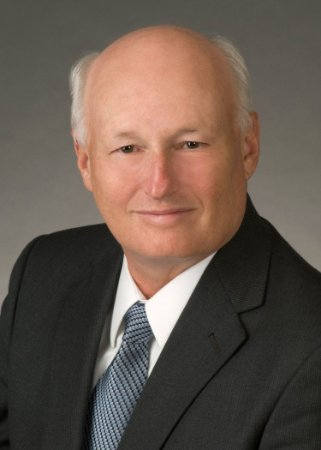“By permitting first action final rejections when amended claims are not ‘patentably indistinct’, the new policy requires a comparison between the pending claims and the proposed amended claims. In other words, the patentability of the proposed amended claims is judged in the context of simultaneously judging if the pending claims are prior art to the proposed amended claims. The USPTO has no authority under the statute to create such phantom prior art.”
 The USPTO recently revised the Manual of Patent Examination Procedure (MPEP) Section 706.07(b) to retroactively impose a first action final rejection (FAFR) policy that significantly reduces a patent applicant’s options (MPEP, E9R10.2019. Fed. Reg. Vol. 85, No. 133 page 41,571). Here, in Part I of this two-part series, we identify and analyze the final agency petition decision behind the policy change. In Part II, we provide summary and analysis of petition decisions relating to premature final office actions. Codifying the new FAFR standard in the June MPEP revision opens the door for all patent examiners to impose FAFRs on substantively amended claims, if they so wish.
The USPTO recently revised the Manual of Patent Examination Procedure (MPEP) Section 706.07(b) to retroactively impose a first action final rejection (FAFR) policy that significantly reduces a patent applicant’s options (MPEP, E9R10.2019. Fed. Reg. Vol. 85, No. 133 page 41,571). Here, in Part I of this two-part series, we identify and analyze the final agency petition decision behind the policy change. In Part II, we provide summary and analysis of petition decisions relating to premature final office actions. Codifying the new FAFR standard in the June MPEP revision opens the door for all patent examiners to impose FAFRs on substantively amended claims, if they so wish.
Alternative Definition of Same Invention
As noted in a recent LAW360 article, the USPTO has quietly expanded FAFR practice to permit examiners to make FAFRs in continuing applications even when there is much more than a de minimis amendment to the claims. This policy change is not readily apparent to practitioners, since the USPTO discontinued the practice of providing MPEP revision marking in 2014. Moreover, the Section 706.07(b) policy change appears retroactively applicable to requests for continued examination (RCEs) and continuation applications (CONs), even those filed with substantive claim amendments prior to the June 2020 revision. Further, FAFRs are in general at odds with 35 U.S.C. Section 132’s requirement that should “applicant persist[s] in his claim for a patent, with or without amendment, the application shall be re-examined.” (Emphasis added.)
Since 1969, the term same invention has been defined for FAFR purposes as in the context of statutory double patenting, i.e., as identical subject matter being claimed twice or “same invention” (See MPEP Section 804, discussing In re Vogel, 422 F.2d 438 [CCPA 1970] and Examiner Note 1 in Form Paragraph 8.31). For the purposes of this paper, the traditional pre-June 2020 definition for “same invention” is referred to as “identical scope”. Under the identical scope legal standard, most RCEs and CONs filed with claims amended to be broader or narrower than those previously examined would be entitled to non-final office actions (or allowances) because the scope of the claimed subject matter would not be identical.
The June 2020 revision expands Section 706.07(b) by retaining the identical scope legal standard and by also providing a second legal standard which permits a FAFR when claims are patentably indistinct from previously examined claims. Revised Section 706.07(b) further defines patentably indistinct as independent and distinct as used in 37 C.F.R. Section 1.145 in the context of restriction practice. Adding additional layers of uncertainty, MPEP 802.01 further re-defines independent and distinct language of 37 C.F.R. Sections 1.145, 1.141, 1.142, 1.145 and 35 U.S.C. Section 121 to mean independent or distinct. The expanded patentably indistinct legal standard allows even substantially amended claims to receive a FAFR.
The June 2020 Section 706.07(b) revision lacks rationale or guidance to identify circumstances in which examiners would be authorized to apply the identical scope legal standard or the patentably indistinct legal standard. Without rationale or guidance, the choice of FAFR legal standard is seemingly arbitrary and left to the Examiner’s discretion.
Why the Change in Policy?
Section 706.07(b) continues to state “[i]t would not be proper to make final a first Office action in a continuing or substitute application or an RCE where that application contains material which was presented in the earlier application after final rejection or closing of prosecution but was denied entry because (A) new issues were raised that required further consideration and/or search, or (B) the issue of new matter was raised.”
Thus, in order to avoid a FAFR in a CON/RCE, the applicant must file an after final submission knowing that in most cases it will not be entered by the examiner. As previously explained, final office actions are not required by statute or rule. See 37 C.F.R. Section 1.113 (Examiner “may” make rejection final) and In Order To Form A More Perfect Patent Examination System—It Is Time To Update Compact Prosecution to Compact Prosecution 2.0, posted September 24, 2013 on the IPO Law Journal-Patent Section web page. Rather, this practice originated with the advent of “compact prosecution” in the late 1960s together with the then-needed after final practice. By requiring applicants to file a needless after final submission, the USPTO only engenders more fees for unnecessary extensions of time and a 2-4 month delay in prosecution.
Of course, by allowing the examiners to make FAFRs under the new policy, the examiners receive their extra “counts” from the refiling more expeditiously.
Is the New “Patentably Indistinct” Legal Standard Correct?
By permitting FAFR when amended claims are not “patentably indistinct” the new policy requires a comparison between the pending claims and the proposed amended claims. In other words, the patentability of the proposed amended claims is judged in the context of simultaneously judging if the pending claims are prior art to the proposed amended claims. The USPTO has no authority under the statute to create such phantom prior art. Instead of using the pending claims as prior art as a comparator under this new policy, the proposed amended claims should be compared against the prior art that is used by the examiner in the pending rejections.
The June 2020 MPEP Revision is Based Upon an Obscure Final Agency Petition Decision
Normally, USPTO personnel are alerted of upcoming policy changes, including advance notice of changes to the MPEP, by way of memoranda to the examining corps, and the USPTO announces upcoming policy changes via the Federal Register Notice. Unusually, this recent revision to Section 706.07(b) was made without advance notice, causing patent practitioners to be caught unaware of the retroactive change in practice. When one of the authors contacted an MPEP editor to request a copy of the Federal Register Notice announcing the specific change to Section 706.07(b), they were instead provided the October 13, 2017 final agency petition decision (FA Decision) in patent application 13/353,841 (application ‘841).
The FA Decision expanded the USPTO’s authorization to make FAFRs of amended claims, citing In re Bogese, 22 USPQ2d 1821, 1824-26 (Comm’r Pat 1992), and the Molins PLC v. Quigg, (D.D.C. 1987) and (Fed. Cir. 1988) decisions, case law arising from pre-GATT applications eligible for a potential patent term beginning on the day of issue and extended with each continuing application. See FA Decision at 5-6. In In re Bogese, an applicant filed a series of file-wrapper-continuation applications, each without response or amendment to the prior non-final Office action
Unlike the facts in In re Bogese, the FA Decision pertains to two RCEs filed in application ‘841 which included full responses to the prior office actions and substantive amendments to the claims. Exemplary amendments accompanying the September 30, 2016 RCE include (i) Claim 1 amended to add “wherein the nozzle plate has a flat portion which is parallel to the surface of the base material and the opening is arranged in the flat portion” and (ii) Claim 19 amended to add “and the pressure outside of the region is measured at the peripheral portion of the opening”.
For the second time in application ‘841’s prosecution, When the examiner made the second FAFR on amended claims filed with an RCE in application ‘841, applicant petitioned for withdrawal of the FAFR. In a decision dated August 17, 2017, the Technology Center (“TC”) 3700 Group Director used the following rationale to deny the initial petition and uphold the FAFR:
In a RCE application, all claims should be directed to the same invention as previously examined and claimed. Claims 1 and 19 as amended in the RCE are directed to the same invention but albeit with different scope. If claims 1 and 19 were directed to a different invention, then the RCE could have been improperly filed. (See MPEP 706.07(h)).
The August 17, 2017 decision exposes the catch-22 situation applicants now face when filing RCEs. “The applicant cannot, as a matter of right, file a request for continued examination (RCE) on claims that are independent and distinct from the claims previously claimed and examined (i.e., applicant cannot switch inventions by way of an RCE as a matter of right). See MPEP § 706.07(h), subsection VI.(B)” See MPEP Section 819. Yet with the August 17, 2017 TC Group Director’s decision, now codified in the June 2020 revision to Section 706.07(b), applicants now are at risk for a FAFR when the RCE is filed with patentably indistinct claims.
When applicant requested reconsideration of the TC Group Director’s decision, the USPTO issued a final agency decision stating “making the Office action of July 7, 2016, a final Office action was consistent with MPEP 706.07(b).” FA Decision at 9. However, the USPTO’s June 2020 expansion of Section 706.07(b) to add a second, alternative legal standard casts doubt on the notion that the final Office actions in application ‘841 were in fact consistent with the pre-June 2020 Section 706.07(b). Specifically, the FA Decision upheld the examiner’s consecutive FAFRs on claims substantively amended by the October 8, 2015 RCE and the September 30, 2016 RCE.
The FA decision is not consistent with co-author Burke’s understanding of FAFR practice. In co-author Burke’s experience, TC1600 decisions granting or dismissing requests for withdrawal of a premature final Office action were consistently based on the identical scope legal standard of MPEP Section 804. Dr. Burke is unfamiliar with the practice of assessing propriety of a FAFR using the newly established patentably indistinct legal standard.
Applicants routinely rely upon the legal advisors of the Office of Patent Legal Administration (OPLA) who are authorized “[I]n its representative capacity of the USPTO, [to respond] to inquiries about patent law and Office policies and procedures via letters, phone calls, lectures, presentations, and other contacts with members of the public and the patent bar.” See Office of Patent Legal Administration page at the USPTO website. Indeed, the OPLA took the position that the same invention condition. i.e., claims are drawn to the same scope of invention, is not met if there is more than a de minimis amendment to the claims:

(Emphasis in original). Page 3 of the July 28, 2017 petition in application ‘841.
Nonetheless, the FA Decision dismissed arguments concerning “information allegedly provided by an employee or employees of OPLA” as “of no consequence”. See FA Decision Footnote 5 and page 8. Instead, the FA Decision provided the following rationale for expanding FAFR practice:
[W]hile many first action final rejection situations involve instances in which an applicant has failed to make any amendment to the claims (e. g., Bogese), a review of past first final actions decisions reveals first action final rejections being approved notwithstanding a change to the scope of the claims (e. g., the application at issue in Molins PLC v. Quigg, 837 F.2d 1064 (Fed. Cir. 1988), involved a change of scope of the claims that is comparable to the changes in the above-identified application). This suggests that the phrase “same invention” in MPEP 706.07(b) has not previously been considered by the United States Patent and Trademark Office (USPTO) as being limited to the “same invention” for purposes of statutory double patenting under 35 U.S.C 101.”
See FA Decision at pages 7-8.
As Section 802.01 cautions “[a]ll decisions should be read carefully to determine the meaning intended.” Confusingly, the FA Decision is both “granted to the extent that the action of the Technology Center Director has been reviewed” and “denied with respect to overturning the Technology Center’s Decision.” (Emphasis added). See FA Decision at 9. The FA Decision muddies the waters by suggesting that a second, separate definition exists for the phrase same invention yet refraining to provide that second definition or identify circumstances when the alternative definition would be applicable. The FA Decision does not employ the phrases “independent and distinct,” “restriction,” or “37 C.F.R. Section 1.145” now codified in Section 706.07(b). The phrase “patentably indistinct” is used only in the context of acknowledging petitioner’s argument and the phrase “patentably distinct” only occurs in the context of a double negative: “it is not superfluous for “same invention” in MPEP 706.07(b) to mean only that the claims must not be drawn to a patentably distinct invention.” See FA Decision at page 8. Section 802.01 goes on to caution “[t]he terms ‘independent’ and ‘distinct’ are used in decisions with varying meanings.” Layering upon the confusion, Section 802.01 mis-interprets the plain language independent and distinct of 35 U.S.C. Section 121 and 37 C.F.R. Section 1.145 to mean independent or distinct. In any event, it is difficult to determine whether the FA Decision led to the Section 706.07(b) policy change or whether the Section 706.07(b) policy change was made to retroactively provide support for the FA Decision.
In Part II, we will identify and analyze decisions issued before and after the FA Decision which address the propriety of FAFR on amended claims filed with a CON or RCE. We discover that the FA Decision, which was inconsistent with the standard of pre-2020 Section 706.07(b), inconsistent with co-author Burke’s understanding, and inconsistent with the OPLA’s assessment, is also inconsistent with the manner in which the majority of the TC Group Directors decide FAFR petitions.

![[IPWatchdog Logo]](https://ipwatchdog.com/wp-content/themes/IPWatchdog%20-%202023/assets/images/temp/logo-small@2x.png)



![[Advertisement]](https://ipwatchdog.com/wp-content/uploads/2024/04/UnitedLex-May-2-2024-sidebar-700x500-1.jpg)
![[Advertisement]](https://ipwatchdog.com/wp-content/uploads/2024/04/Artificial-Intelligence-2024-REPLAY-sidebar-700x500-corrected.jpg)
![[Advertisement]](https://ipwatchdog.com/wp-content/uploads/2024/04/Patent-Litigation-Masters-2024-sidebar-700x500-1.jpg)

![[Advertisement]](https://ipwatchdog.com/wp-content/uploads/2021/12/WEBINAR-336-x-280-px.png)
![[Advertisement]](https://ipwatchdog.com/wp-content/uploads/2021/12/2021-Patent-Practice-on-Demand-recorded-Feb-2021-336-x-280.jpg)
![[Advertisement]](https://ipwatchdog.com/wp-content/uploads/2021/12/Ad-4-The-Invent-Patent-System™.png)






Join the Discussion
9 comments so far.
JPOS reader
September 28, 2020 12:06 pmFact Correction: “Compact prosecution” was first published at least September 1962 (see 44 JPOS 635). It has roots back to Kinnan’s publication in Mortimer’s Patent Office Papers. The Journal has lots of historically insightful articles, including final rejection practice (e.g., 11 JPOS 390).
David Lewis
September 23, 2020 03:47 pmThank you for this article.
PTO-indentured
September 23, 2020 11:46 amOligarch Secret Sauce: Amibiguity
Anon
September 22, 2020 08:33 pmipguy,
Sadly you alight upon an inconvenient fact: challenging improper finality is a blackhole sojourn into the abyss of petition practice.
ipguy
September 22, 2020 04:15 pmThis article brings to light an issue that I’m sure few practitioners are even consciously aware of.
The USPTO is creating a situation ripe for abuse. Even experienced Primary Examiners seem to have a loose grasp of when a second Action may properly be deemed “Final,” much less when a First Action may properly be deemed “Final.”
Ultimately, I view this as a revenue-generating move by the USPTO with increased fees coming from petitions, appeals and RCEs.
A few years ago, a new associate was studying for the Patent Bar, and asked for my advice as to what to do if they couldn’t decide on the proper answer to a multiple choice question. I told them that, when in doubt, the correct answer is usually the answer that requires the applicant to pay a fee to the USPTO. It’s all about the fees.
AAA JJ
September 22, 2020 03:36 pmIt’s silly but you have to file a response after final and get that “new issues that would require further search and/or consideration” box checked on the advisory action if you want to be assured of avoiding a FAFR. Sometimes I will conduct an examiner interview after final and ask the examiner to acknowledge that any proposed amendments will constitute a new issue and then, upon agreement, proceed straight to an RCE with that agreement clearly stated in the remarks section of the response accompanying the RCE.
Of course the PTO could simply get rid of FAFR practice as the Bogese fact pattern is practically non-existent.
Pro Say
September 22, 2020 10:32 amThank you all for this important information.
So the Patent Office’s right hand . . . doesn’t know what its left hand is doing.
Something we’re all SO surprised to discover, right?
Curious
September 22, 2020 10:32 amSounds like classic USPTO BS.
I saw one of those recently in which a RCE was filed with amendments to the claims, and the examiner came back with a Final Office Action. We considered filing a petition as our understanding was that “the term same invention has been defined for FAFR purposes as in the context of statutory double patenting, i.e., as identical subject matter being claimed twice or ‘same invention’.”
After decades dealing with the USPTO, the logic behind this is readily apparent. The USPTO really doesn’t like to do its job — which is to examine patent applications. Moreover, the USPTO apparently really likes to extort RCEs from applicants — putting more money into the USPTO’s coffers and giving examiners cheap production credit.
To paraphrase an old Star Wars quote …
“General [David Boundy]. Years ago you served [patent attorneys everywhere] in the [wars against the Jon Dudas]. Now he begs you to help him in his struggle against the Empire. …. This is our most desperate hour. Help me, [David Boundy]. You’re my only hope.
I write that in half jest — if there is someone who knows how to take this down, it will be David Boundy.
John L. Rogitz
September 22, 2020 10:26 amThis just ensures more and earlier appeals. Which is the way many practitioners are going anyway.